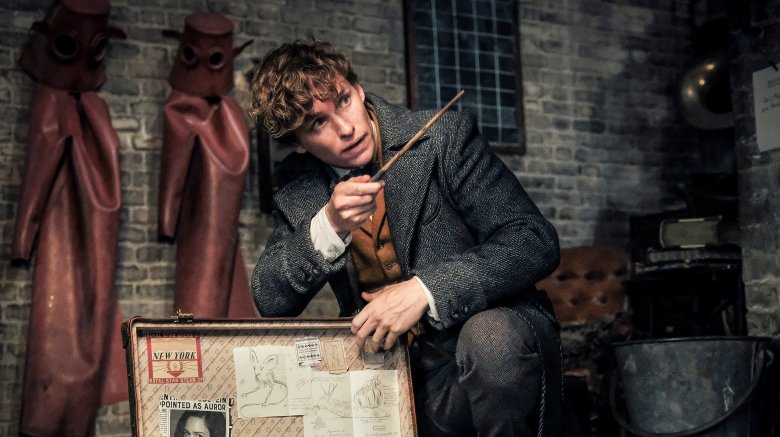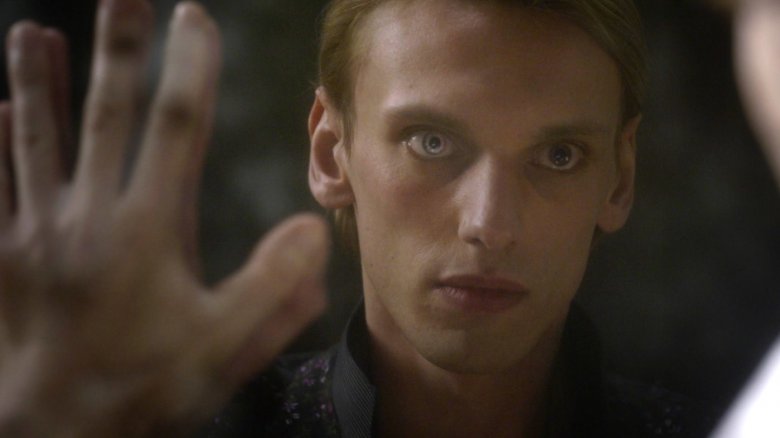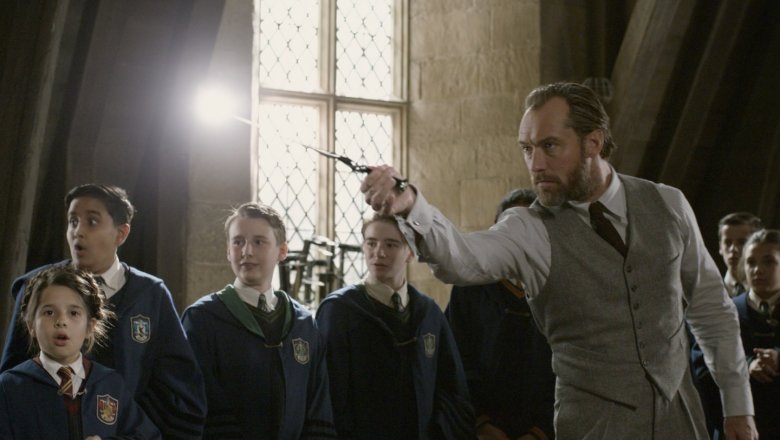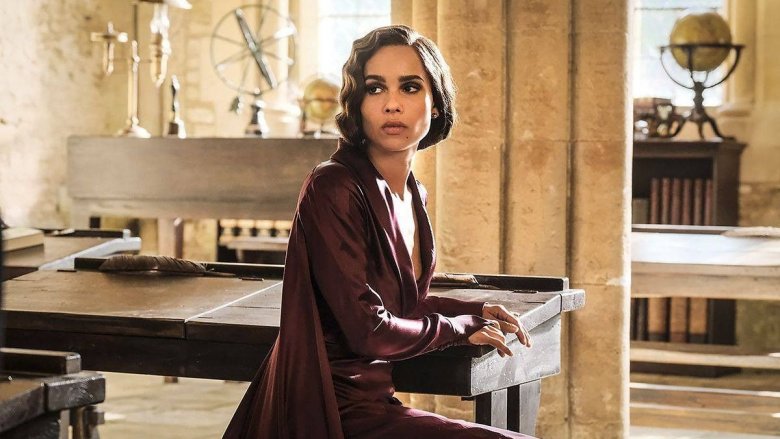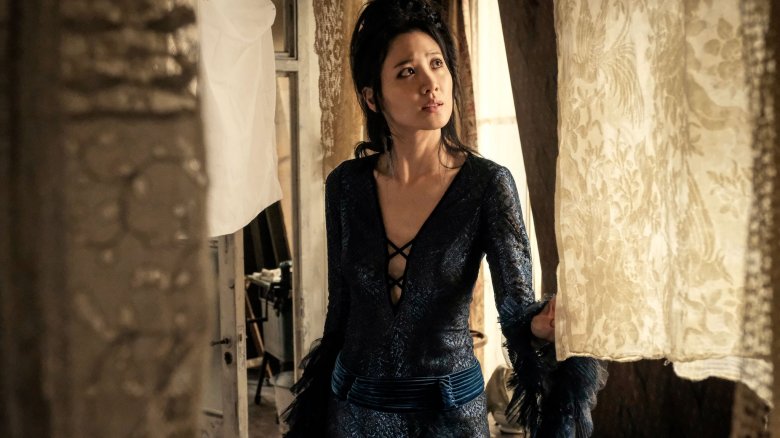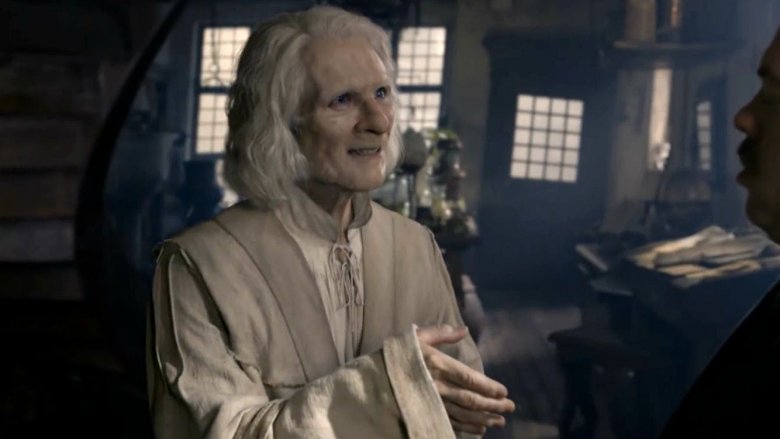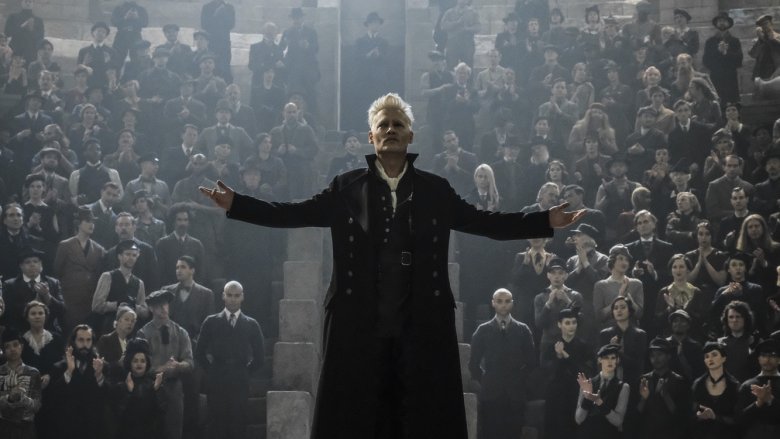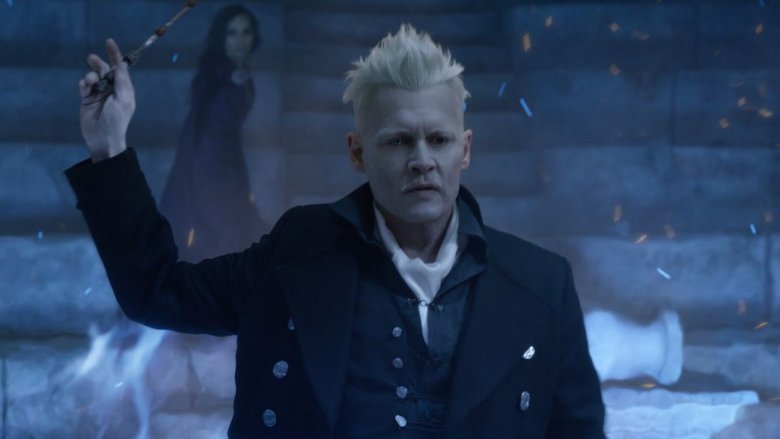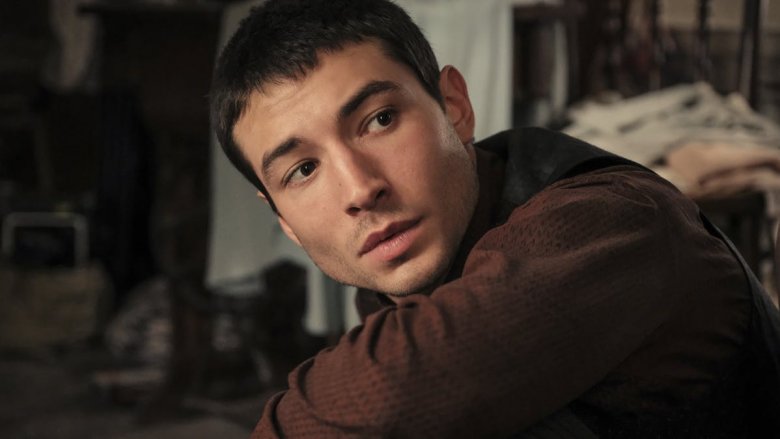Small Details You Missed In Fantastic Beasts: The Crimes Of Grindelwald
Fantastic Beasts: The Crimes of Grindelwald finally brings together the story of Newt Scamander (Eddie Redmayne) and his old professor Albus Dumbledore (Jude Law), as the story journeys back to Hogwarts School of Witchcraft and Wizardry long before it would be violated by the Dark Lord and his army of deatheaters.
The film picks up where Fantastic Beasts and Where to Find Them left off, as Gellert Grindelwald (Johnny Depp) inevitably escapes the clutches of the Ministry of Magic and begins his mission to conquer the world so wizards can roam free without fear of persecution by non-magical people. And since Dumbledore and Grindelwald have a very complicated history with one another — even bound by blood to never fight — the former takes some serious convincing before he'll get involved against his former friend-slash-flame. In the process, there are a ton of Easter eggs planted throughout the picture that only true Harry Potter aficionados are bound to catch. Here's a look at some of the finer details in Fantastic Beasts 2 you might've missed. Spoilers ahead!
Familiar faces
In The Crimes of Grindelwald, there's a lot to unpack about the relationship between the titular villain and his equal in wizarding prowess, Albus Dumbledore. The erstwhile Defense Against the Dark Arts professor's little visit to the Mirror of Erised does help reveal some of the major points: In it, he sees his younger self making a blood pact with the boy he says he was "closer than brothers" with (author J.K. Rowling long ago revealed Albus was in love with Gellert Grindelwald in their younger days).
Not only does that call back a similar scene from Harry Potter and the Sorcerer's Stone when the Boy Wizard summons up a happier image of his parents, it also earns a more subtle bit of nostalgia from the original series thanks to who we see in it. Actors Toby Regbo and Jamie Campbell Bower reprise their roles as Dumbledore and Grindelwald in Fantastic Beasts 2, after having portrayed the characters ever so briefly in Harry Potter and the Deathly Hallows: Part 1. Considering how small their screen time was in the original series, they could've easily been replaced, but seeing them return to the roles nicely bridges the gap between the film sets as they're the first major cast members to reprise their Harry Potter roles in the Fantastic Beasts series.
Name drops
The sweeping new shots of an unfettered Hogwarts probably made for a very welcome sight for Harry Potter fans who cringed with every artifact's destruction in the Second Wizarding War in Deathly Hallows: Part 2. The bridge is shown intact, the towers are still cresting above the mountainous terrain, the Great Hall is perfectly lit by floating candles, and, of course, Dumbledore's office is still filled with so many of his intriguing tools of the trade.
The scenes involving young Dumbledore also featured a few namedrops that will ring familiar to fans. First, there's the instruction for the students to go with Professor McGonagall, who we all know and love so well from the Harry Potter series. Then, one student's name is called out as Mclaggen, who must be the ancestor of a tertiary Gryffindor student from the original series, whose family lineage was known to be significant. Judging by the boy's wily behavior in the scene, the younger version got his reputation for being a handful honestly.
Facing fears
Another major callback to the Harry Potter series happens when Dumbledore is teaching his Defense Against the Dark Arts class and invites the students to learn about boggarts and the riddikulus charm, in a lesson that almost exactly replicates Remus Lupin's method in Harry Potter and the Prisoner of Azkaban. Fans will recognize the big closet chest that's so instrumental in the background of the scene, and the revelation that Leta LeStrange's greatest fear is something very shameful and hurtful mirrors Lupin's full moon moment very eerily.
The scene goes to show that although there were certainly some unique characters that would later famously occupy that space, which was seen as a cursed job indeed, some things about the Defense Against the Dark Arts classroom simply never changed. Either that, or Remus Lupin really took notes during his own time as a student at Hogwarts and replicated Dumbledore's instruction to a tee once he had the shot to teach the course. Longtime fans may feel déjà vu when Newt takes the polyjuice potion to sneak into the Ministry as his brother, echoing Harry, Hermione, and Ron's tactic back in Deathly Hallows: Part 1.
Molten dress
Fantastic Beasts: The Crimes of Grindelwald also turned what we knew about an old Harry Potter character on its head when it revealed that Nagini was not always the snake sidekick of the Dark Lord. Instead, she was formerly a person with the Maledictus curse, which meant that she shape-shifted into snake form and one day would not be able to change back.
There's a running theory that she might turn out to be Tom Riddle's mother before it's all said and done. It would certainly explain the allegiance she develops for the character later on — not to mention his own slitted nostrils and gift with parseltongue — if she were to, say, conceive Voldemort with Credence. Per Pottermore, though, Tom's parents were a muggle named Tom Riddle and a witch named Merope Gaunt, so canon doesn't support the idea for now. Regardless, the design of her dress alone may be indicative of where things are going for her. Throughout the film, she wears a dress with a pattern that could easily pass for scales, which has textured ruffles that give her the appearance of a snake shedding its skin. She might spend most of the movie just trying to help Credence find his family, but once he takes Grindelwald's side, she seems to be thinking differently about her friend. Or is she just biding her time until she follows suit? Clearly, she's in some kind of transition, and her sartorial selection certainly reflects that.
Nicholas Flamel
Harry Potter fans may have previously only known of Nicholas Flamel thanks to Harry, Hermione, and Ron discovering how he created the Philosopher's Stone and achieved immortality — at least he lived long enough to become pals with Albus Dumbledore — in the first installment. However, Fantastic Beasts 2 gives us a fuller glimpse of the character in his crone-like decrepit form.
Unlike most of Rowling's character creations in both series, Flamel was actually a real person who lived in Paris, France and was rumored to have used alchemy to become an immortal being. Rowling later revealed that she had "a highly detailed and exceptionally vivid dream about Flamel, several months into the writing of Philosopher's Stone, which was like a Renaissance painting come to life. Flamel was leading me around his cluttered laboratory, which was bathed in golden light, and showing me exactly how to make the Stone." No doubt her ability to include a very similar scene in The Crimes of Grindelwald was a dream come true.
Visions of history
The Harry Potter series largely isolated itself to the grounds at Hogwarts, and even when the characters did venture elsewhere, there was a very concentrated effort on their part not to expose themselves to ordinary people. As such, very little from the outside world was ever gleaned by the Potter characters, and outside goings-on had little bearing on what the wizards were up to, except to inspire Mr. Weasley's endless fascination.
In Fantastic Beasts, however, human history is happening around these wizards, and rather than separating the two worlds as strictly, the film incorporates several recognizable moments from history — whether we like it or not. Leta reveals that she and her brother Corvus were on board the Titanic as it went asunder (after she'd baby-swapped him for a less colicky child, which ultimately cost him his life). If that image of the sinking ship wasn't enough, Grindelwald proceeds to conjure up images of all the terrible things humans are about to do to convince his fellow wizards that they need to take the reins of civilization before it all happens. Among the images are scenes of World War II, including a glimpse of Holocaust victims being marched to the camps and the atomic bombing of Hiroshima and/or Nagasaki. There's a latent suggestion that he might have been able to prevent these atrocities if he'd been successful in his plans for world domination.
New nickname
A less controversial element to Grindelwald's speech is the new nomenclature he reveals for us ordinary human types. Fantastic Beasts and Where to Find Them introduced the term "no-majs" as the American version of non-magical humans, which had always been called "muggles" in the Britain-based Harry Potter series. Now, we've got a new name to add to the lexicon: the Can't-Spells.
While describing his plans for wizards to take over the world, Grindelwald says, "It has been said that I hate the Muggles, the No-Maj, the Can't-Spells. I do not hate them. I say the Muggles are not lesser. Not worthless, but of other value. Magic blooms only in rare souls. It is granted to those who live for higher things." While he doesn't reveal the exact origin of that last moniker, it's clearly common enough to earn a mention alongside the other two better-known names for non-wizards.
Aurelius Dumbledore
The big twist at the end of Fantastic Beasts: The Crimes of Grindelwald is what we learn about Credence's family history. After narrowly escaping capture in the first film, he spends this movie trying to track down the identity of his real parents and why they decided to leave him in the care of a horrible woman like Mary Lou Barebone. In the end, he discovers that he isn't the long-lost sibling of Leta LeStrange, as he'd expected, but that he was actually named Aurelius Dumbledore — and his "brother" is trying to destroy him, according to Grindelwald. The implication is that it's Albus Dumbledore, who'd previously only been known to have one brother named Aberforth and a late sister named Ariana.
Grindelwald could just be lying to the boy, though. After all, Dumbledore is the only one who can defeat Grindelwald, and Grindelwald believes Credence is the only person who can take down the great wizard. Perhaps he's trying to recruit Credence to do his dirty work on the basis of an old family drama that doesn't actually exist. It could also be that J.K. Rowling has decided to expand Dumbledore's already dicey family history by bringing in another brother who resents him. Or perhaps Credence is related to a different Dumbledore, like Albus' aunt or even Ariana, before she met her tragic end. One way or the other, Harry Potter fans know Aurelius Dumbledore isn't a name that's been talked about before this movie, and we'll have to see where this goes.
